Introduction to Medium Voltage Fusion Tape
In the realm of electrical insulation and sealing, particularly within demanding industrial environments, the integrity of cable joints and terminations is paramount. This necessitates the use of advanced materials capable of withstanding significant electrical stress, environmental exposure, and mechanical forces. Among these specialized solutions, medium voltage fusion tape emerges as a critical component, offering unparalleled performance for systems operating at elevated voltage levels. Unlike conventional adhesive tapes, this self-amalgamating product forms a homogenous, void-free mass upon application, providing superior dielectric strength, moisture sealing, and long-term reliability. Its unique properties ensure robust insulation and protection for electrical infrastructure, contributing significantly to operational safety and system longevity across diverse sectors.
The innovative design of medium voltage fusion tape, a specialized form of self-amalgamating tape, allows it to integrate into a solid rubber mass without the need for external heat or pressure, creating a seamless, waterproof, and electrically stable barrier. This characteristic is particularly vital for maintaining the performance of medium voltage cables and components in conditions where traditional insulation methods might fail. Its application ensures a high level of protection against partial discharges, corona effects, and environmental ingress, thereby safeguarding critical power distribution systems.
Industry Trends and Market Dynamics
The global market for electrical insulation materials is experiencing robust growth, driven by several macro-economic and technological trends. The rapid expansion of renewable energy infrastructure, including wind and solar farms, necessitates reliable and durable medium voltage cable solutions. Furthermore, the modernization of aging power grids, increased industrial automation, and the proliferation of smart grid technologies are all contributing to a heightened demand for high-performance insulation products. Countries around the globe are investing heavily in grid upgrades and expansions to support growing energy consumption and ensure energy security.
Within this evolving landscape, the demand for self-amalgamating tapes, especially medium voltage fusion tape, is on an upward trajectory. Key drivers include the need for enhanced safety, reduced maintenance costs, and improved system reliability in critical applications. The shift towards more compact and integrated electrical systems also pushes for insulation materials that offer high dielectric strength in thinner profiles. Regulatory frameworks emphasizing environmental protection and energy efficiency further encourage the adoption of advanced, long-lasting insulation solutions that minimize material waste and extend service life. The market is also seeing innovation in material science, leading to tapes with even better thermal, electrical, and mechanical properties, making them indispensable for future power infrastructure development.
The Manufacturing Process of Medium Voltage Fusion Tape
The production of high-quality medium voltage fusion tape is a sophisticated process that demands precision and stringent quality control. It begins with the careful selection of raw materials, primarily Ethylene Propylene Rubber (EPR) or similar synthetic rubbers, known for their excellent electrical properties and resistance to weathering. These base polymers are then compounded with a proprietary blend of tackifiers, plasticizers, cross-linking agents, and fillers, all carefully balanced to achieve the desired self-amalgamating characteristics, dielectric strength, and mechanical properties.
Detailed Process Flow:
Material Preparation & Compounding: High-grade Ethylene Propylene Rubber (EPR) and specialized self-amalgamating additives are carefully selected and measured. These are then mixed in a high-shear internal mixer (Banbury mixer) under controlled temperature and pressure to ensure a homogeneous compound, essential for uniform electrical and physical properties. This stage is critical for achieving the tape's unique fusion capability.
Calendering (Extrusion & Forming): The compounded rubber is then fed into a calender machine, a series of precisely spaced rollers. Here, the material is formed into thin sheets of specified thickness and width. This process, analogous to forging or precision shaping, ensures consistent dimensional stability and minimizes internal stresses within the tape, which is vital for its electrical performance.
Slitting & Winding: The continuous sheets are then precisely slit into rolls of the desired width using automated CNC cutting equipment. A protective liner (often polyethylene film) is simultaneously applied to prevent the tape from amalgamating prematurely. The tape is then wound onto cores, ready for packaging.
Curing (Optional/Specific Formulations): For some formulations, a post-processing curing stage might be employed to further enhance the material's cross-linking, optimizing its mechanical and thermal properties. This step, if applied, is carefully controlled to prevent any degradation of the self-amalgamating characteristic.
Quality Control & Testing: Throughout the entire manufacturing process, rigorous quality control checks are performed. Finished products undergo extensive testing in accordance with international standards such as ISO 9001:2015 for quality management, ASTM D4388 for physical properties, and ANSI C119.1 for electrical connectors and splicing systems. Key tests include dielectric strength, insulation resistance, tensile strength, elongation at break, water absorption, and ozone resistance. These tests ensure that each batch of tape meets the specified performance criteria for demanding applications in target industries like petrochemical, metallurgy, and water supply & drainage.
The meticulous control over each stage ensures that the final product provides superior energy saving through reduced electrical leakage and offers exceptional corrosion resistance, contributing to an extended service life often exceeding 20 years in typical application scenarios.

Technical Specifications & Performance Parameters
The efficacy of medium voltage fusion tape is defined by a range of critical technical specifications that dictate its performance under operational stress. Understanding these parameters is crucial for engineers and procurement specialists when selecting the appropriate insulation solution for specific applications. These specifications ensure the tape can reliably perform its dual role of electrical insulation and environmental sealing.
Key Performance Parameters:
- Dielectric Strength: This is a measure of the maximum electric field that the insulating material can withstand without electrical breakdown. For medium voltage applications, a high dielectric strength (typically >20 kV/mm) is essential to prevent insulation failure and ensure personnel safety.
- Operating Temperature Range: Defines the ambient and operational temperatures at which the tape can maintain its performance characteristics. Standard tapes typically range from -40°C to +90°C, with some specialized variants extending beyond these limits.
- Tensile Strength: Indicates the maximum stress the tape can withstand while being stretched or pulled before breaking. High tensile strength ensures mechanical integrity and resistance to tear during and after application.
- Elongation at Break: The percentage increase in length a material can achieve before fracturing. A high elongation property is vital for conforming to irregular shapes and maintaining flexibility during thermal expansion/contraction cycles.
- Ozone Resistance: Crucial for outdoor applications where exposure to ozone can degrade many rubber-based materials. Excellent ozone resistance prevents cracking and material breakdown, extending service life.
- Water Absorption: Measures the amount of water a material absorbs. Low water absorption is critical for maintaining dielectric properties and preventing corrosion in humid or submerged environments.
- Volume Resistivity: A measure of how strongly a material resists electrical current, crucial for assessing its insulating capability. Higher values indicate better insulation.
Typical Product Specification Table (Qiangda Medium Voltage Tape):

Key Technical Advantages
The distinct technical advantages of medium voltage fusion tape set it apart from conventional electrical insulation tapes, making it the preferred choice for critical applications. These benefits are derived from its unique self-amalgamating properties and advanced material composition.
- Superior Dielectric Performance: Upon application, the tape fuses into a seamless, void-free electrical insulation. This eliminates potential air gaps that could lead to partial discharges, significantly enhancing the dielectric integrity and preventing breakdowns, even under high voltage stress.
- Excellent Moisture and Environmental Sealing: The self-fusing characteristic creates a solid, watertight barrier that is impervious to moisture ingress. This is crucial for underground, submerged, or outdoor installations, protecting connections from corrosion and electrical tracking.
- High Ozone and UV Resistance: Formulated with materials resistant to ozone and ultraviolet radiation, the tape maintains its physical and electrical properties even with prolonged exposure to sunlight and harsh atmospheric conditions, ensuring a long service life.
- Exceptional Thermal Stability: With a broad operating temperature range, this tape performs reliably in extreme heat and cold without cracking, softening, or losing its insulating capabilities. This thermal resilience contributes to overall system stability and safety.
- Chemical and Solvent Resistance: It offers robust resistance to a wide array of chemicals, acids, alkalis, and solvents, making it suitable for industrial environments where exposure to corrosive substances is a concern. This extends the life of insulated components in challenging settings.
- Ease of Application: Despite its advanced properties, the tape is highly conformable and easy to apply without specialized tools, making installation efficient and reducing labor costs. Its self-amalgamating nature ensures a professional, secure wrap with minimal effort.
- Long Service Life: Designed for durability, the material composition and robust fusion properties contribute to an extended service life, often exceeding two decades. This longevity translates into reduced maintenance cycles and lower total cost of ownership.
- Enhanced Safety: By providing superior insulation and sealing, the tape significantly reduces the risk of electrical faults, short circuits, and electric shock, thereby enhancing the safety of personnel and equipment.
These advantages collectively underscore why medium voltage fusion tape is an indispensable component in modern electrical infrastructure, providing reliable protection and extending the operational lifespan of critical assets.
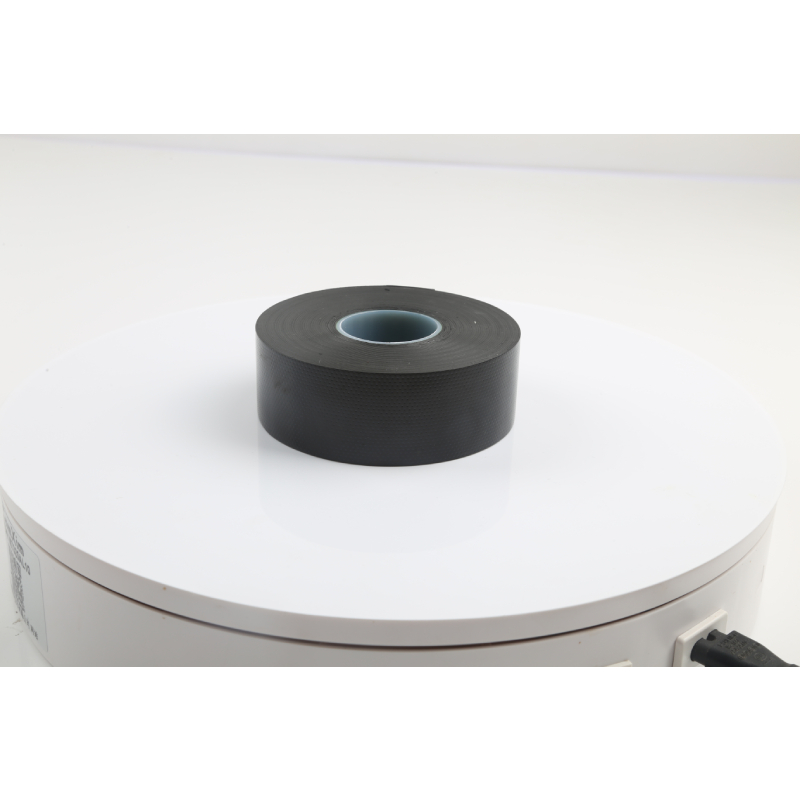
Application Scenarios & Target Industries
The versatility and superior performance of medium voltage fusion tape make it an ideal solution across a wide spectrum of applications and industries where reliable electrical insulation and environmental sealing are critical. Its ability to form a permanent, void-free seal is particularly beneficial in harsh conditions.
Key Application Scenarios:
- Cable Jointing and Splicing: Essential for insulating and sealing medium voltage cable joints, both overhead and underground. It provides a primary insulation layer that fuses with itself, creating a homogeneous, stable barrier against electrical leakage and moisture.
- Cable Terminations: Used for building up stress cones and insulating the transition areas at cable terminations, ensuring adequate creepage distances and preventing flashovers.
- Busbar Insulation: Provides excellent electrical insulation and protection for busbars in switchgear, substations, and control panels, preventing accidental contact and reducing the risk of short circuits.
- Moisture Sealing and Environmental Protection: Forms a waterproof and airtight seal around electrical connections, conduits, and cable entry points, protecting against moisture, dust, and corrosive contaminants.
- Corrosion Protection: The durable, impermeable layer created by the tape provides long-term protection against chemical corrosion for metal components in aggressive industrial environments.
- Repair of Cable Jackets: Effective for repairing damaged outer jackets of power cables, restoring their mechanical strength and environmental protection.
Target Industries:
- Petrochemical: For insulating and protecting electrical systems in refineries, chemical plants, and oil & gas facilities where exposure to hydrocarbons, corrosive gases, and extreme temperatures is common.
- Metallurgy & Mining: Essential for robust electrical insulation in heavy-duty machinery, underground mining operations, and steel mills, where equipment is subjected to severe mechanical stress, dust, and moisture.
- Utilities (Power Transmission & Distribution): A cornerstone for maintaining the reliability of national grids, including substations, overhead lines, and underground cable networks. This is where high-performance `rubber tape electrical` solutions are indispensable.
- Water Supply & Drainage: Used for protecting electrical connections in pumping stations, water treatment plants, and irrigation systems, often in wet or submerged conditions.
- Renewable Energy: Critical for insulating and sealing connections in wind turbines, solar farms, and battery storage systems, which are exposed to varying climatic conditions.
- Marine & Offshore: Provides resilient insulation and waterproofing for electrical systems on ships, offshore platforms, and coastal installations, where saltwater corrosion and humidity are significant threats.
Customer feedback consistently highlights the superior reliability and reduced failure rates achieved through the use of high-quality fusion tapes, underscoring their value in preventing downtime and ensuring operational continuity.
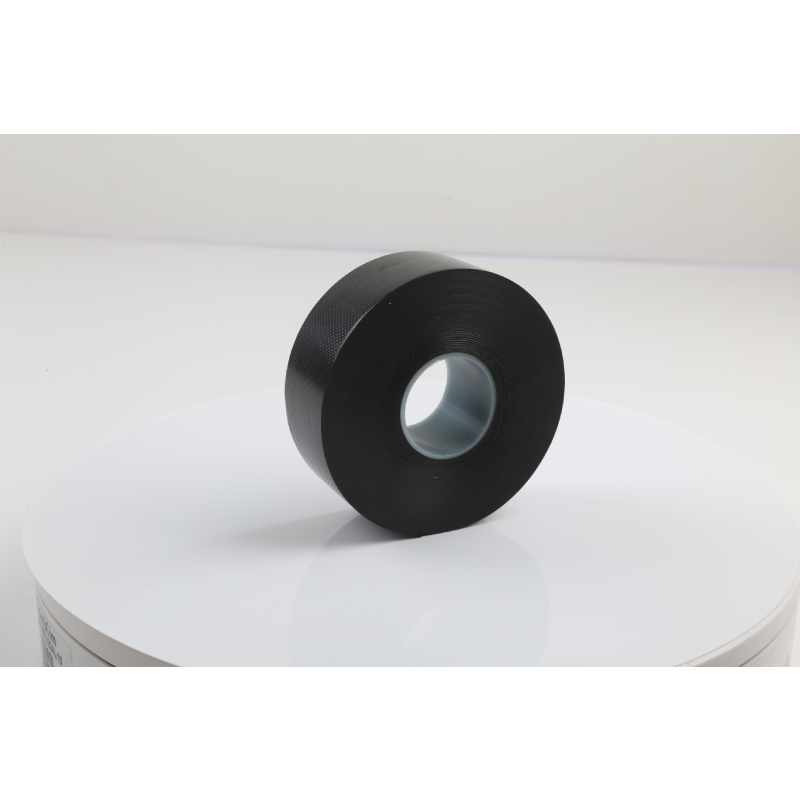
Customized Solutions & Product Variants
Recognizing that diverse industrial applications often have unique requirements, leading manufacturers of medium voltage fusion tape offer a range of customized solutions and product variants. This flexibility ensures that specific project needs for dimensions, material formulations, and performance characteristics can be precisely met, optimizing both functionality and cost-effectiveness.
Areas of Customization:
- Dimensions (Width & Thickness): While standard sizes are readily available, specialized widths (e.g., narrow strips for intricate components or wider tapes for large busbars) and varying thicknesses (for enhanced dielectric strength or conformability) can be engineered to order.
- Material Formulations: Manufacturers can adjust the polymer blend to enhance specific properties such as:
- — Enhanced UV Stability: For applications with prolonged direct sun exposure.
- — Increased High-Temperature Resistance: For environments exceeding typical operating ranges.
- — Improved Chemical Resistance: Tailored for specific corrosive agents present in a facility.
- — Flame Retardant Properties: For applications requiring adherence to strict fire safety standards.
- Color Options: While black is standard, other colors can be produced for phase identification or aesthetic purposes, especially in visible installations or for specific client branding.
- Liner Type: Different release liner materials or designs can be used to facilitate easier unwinding or provide specific handling characteristics in varied environmental conditions.
- Packaging: Custom packaging solutions, including specific roll lengths, core sizes, or multi-packs, can be provided to streamline client inventory management and field application processes.
Engaging with a manufacturer that possesses strong R&D capabilities and a flexible production line, such as Qiangda Tape, allows B2B clients to access solutions perfectly aligned with their unique operational challenges. This bespoke approach often leads to optimized performance, reduced material waste, and enhanced safety in specialized electrical installations.
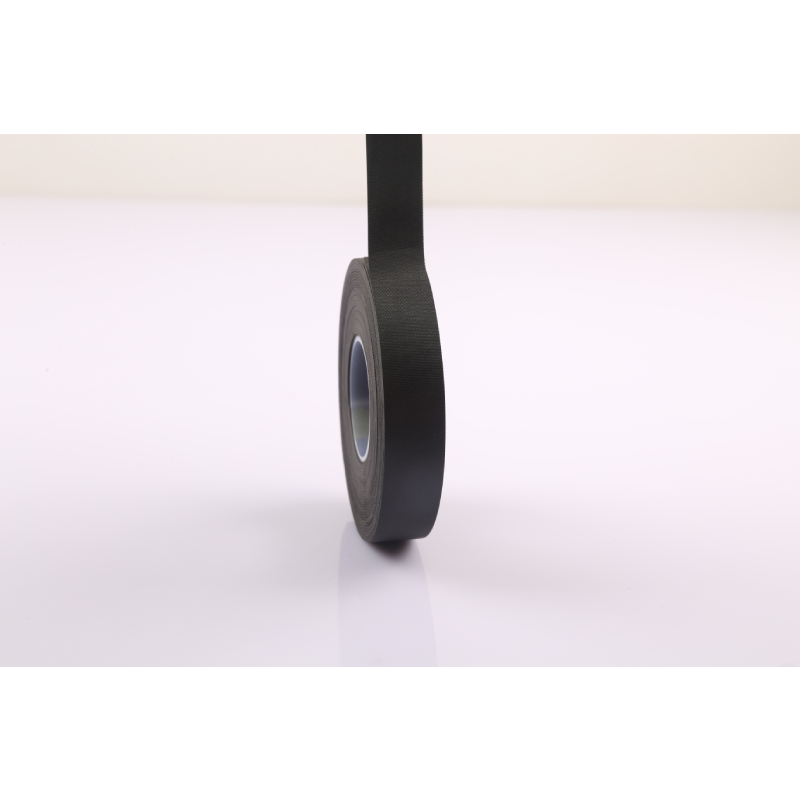
Vendor Comparison and Selection Criteria
Choosing the right vendor for medium voltage fusion tape is a strategic decision that impacts the long-term reliability and safety of electrical infrastructure. While many suppliers offer self-amalgamating tapes, not all products deliver the same level of quality, performance, or support. A meticulous evaluation process is essential to ensure optimal procurement.
Key Selection Criteria:
- Product Quality & Consistency: The ability to consistently meet or exceed published technical specifications is paramount. This includes dielectric strength, tensile properties, and environmental resistance.
- Certifications & Compliance: Verify adherence to international standards such as ISO 9001, ASTM D4388, UL listings, and RoHS compliance. These certifications validate manufacturing excellence and product safety.
- Research & Development Capabilities: A vendor with robust R&D can offer innovative solutions, customized products, and stay ahead of evolving industry demands.
- Technical Support & Expertise: Access to knowledgeable engineers and technical support staff is invaluable for application guidance, troubleshooting, and custom solution development.
- Lead Time & Fulfillment: Reliable supply chains and efficient logistics are critical to avoid project delays. Assess the vendor's capacity to deliver on schedule.
- Cost-Effectiveness & Value: While price is a factor, focus on the total cost of ownership, including product longevity, performance, and reduced maintenance.
- Reputation & References: Check client testimonials, industry recognition, and long-standing partnerships as indicators of reliability and trustworthiness.
Product Comparison Table: Qiangda Medium Voltage Tape vs. Generic Alternatives
This comparison highlights the importance of partnering with a specialized manufacturer like Qiangda Tape, which prioritizes material science, stringent quality control, and comprehensive customer support to deliver superior products for demanding B2B applications.
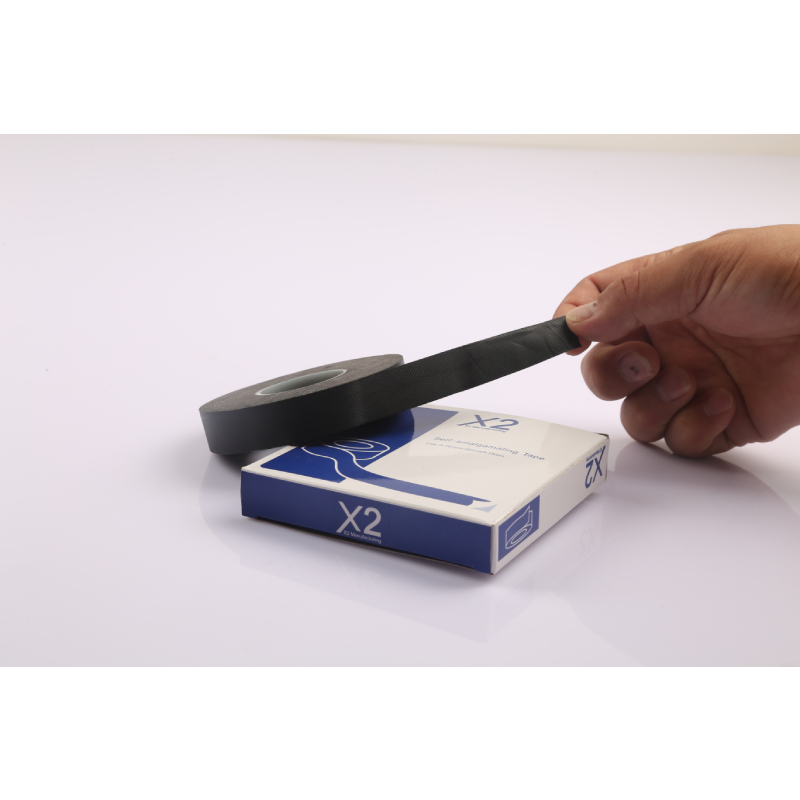
Real-World Application Case Studies
The true value of medium voltage fusion tape is best demonstrated through its successful application in challenging industrial environments. These case studies exemplify how high-performance insulation solutions contribute to operational resilience, safety, and cost efficiency.
Case Study 1: Underground Cable Repair in a Mining Facility
Challenge: A large underground coal mine experienced frequent damage to its 11 kV feeder cables due to abrasive conditions, rockfalls, and constant moisture. Traditional repair methods using heat-shrink sleeves were time-consuming and prone to failure in the dynamic, wet environment, leading to costly downtime.
Solution: The mine switched to using Qiangda's medium voltage fusion tape for repairing cable jackets and insulating splices. The tape’s self-amalgamating properties allowed for a quick, robust, and moisture-proof repair without the need for heat guns, which are often problematic in confined mining spaces. Its high tensile strength and elongation ensured it could withstand mechanical stresses.
Results: Over a 12-month period, the incidence of re-repairs on fusion tape-insulated sections dropped by 70%. The ease and speed of application reduced cable repair time by 40%, significantly minimizing operational downtime and saving thousands in lost production. The superior moisture sealing prevented electrical tracking and corrosion, extending the overall lifespan of the repaired cables.
Case Study 2: Busbar Insulation in a Petrochemical Plant
Challenge: A major petrochemical complex needed to upgrade the insulation on its 3.3 kV switchgear busbars. The existing insulation was degrading due to exposure to aggressive chemical fumes and high ambient temperatures, posing a significant risk of arc faults and short circuits during maintenance or accidental contact. A solution with excellent chemical and thermal resistance was required.
Solution: Qiangda's medium voltage fusion tape, formulated with enhanced chemical and thermal resistance, was selected to overwrap the busbars. Its conformability allowed for seamless application around complex busbar geometries, and upon fusion, it created a durable, chemical-resistant, and high-dielectric barrier.
Results: The plant reported a dramatic improvement in busbar insulation integrity. Visual inspections after three years showed no signs of degradation, cracking, or loss of adhesion, even in areas with persistent chemical exposure. The enhanced insulation significantly reduced the risk of electrical faults, improved operational safety for maintenance personnel, and extended the expected service life of the switchgear, avoiding costly early replacement.
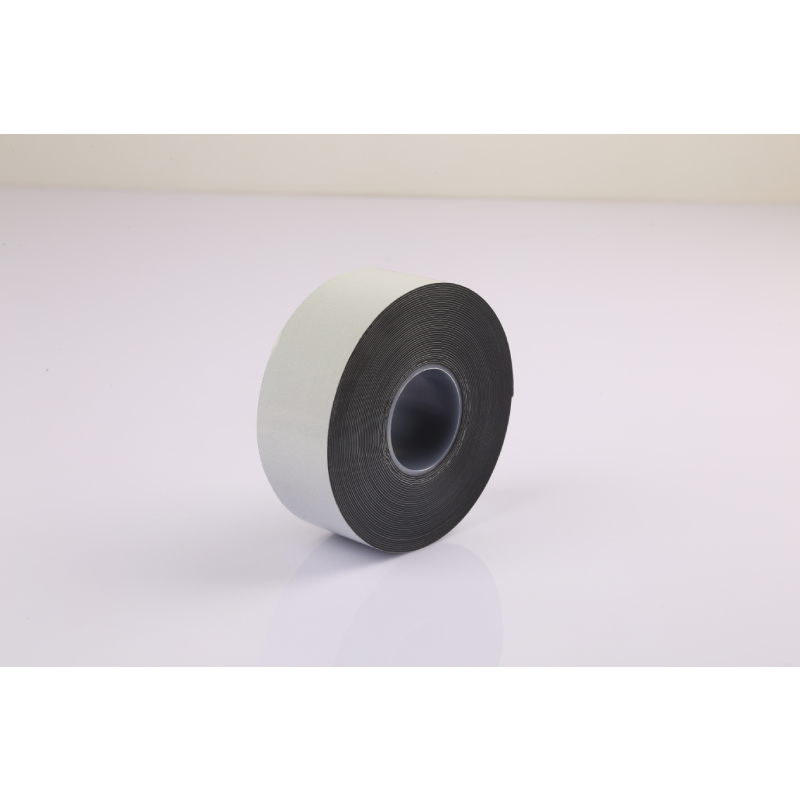
Ensuring Trustworthiness: FAQs, Lead Time, Warranty & Support
Building trust with B2B clients requires more than just a high-quality product. It involves transparent communication, reliable logistics, strong warranty commitments, and responsive customer support. Qiangda Tape is dedicated to upholding these standards for its medium voltage fusion tape and related solutions.
Frequently Asked Questions (FAQs):
- Q: What makes medium voltage fusion tape different from standard electrical tape?
A: Standard electrical tape typically uses an adhesive and does not amalgamate. Fusion tape, made from EPR, self-fuses upon application, creating a seamless, void-free, and watertight insulation barrier with superior dielectric strength and environmental resistance, ideal for medium voltage applications. - Q: Is special equipment required for application?
A: No, medium voltage fusion tape is designed for manual application, requiring only firm tension during wrapping to initiate the amalgamation process. No heat or external pressure is needed. - Q: Can this tape be used for outdoor applications?
A: Absolutely. Our fusion tape is formulated with excellent UV and ozone resistance, making it highly suitable for outdoor and aerial installations, maintaining performance in harsh weather conditions. - Q: What is the shelf life of the tape?
A: When stored properly in its original packaging at recommended temperatures (typically 10-30°C / 50-86°F), Qiangda medium voltage fusion tape has a shelf life of at least 5 years. - Q: Is the tape removable or permanent?
A: Once amalgamated, the tape forms a permanent, integrated insulation. While it can be cut and removed, it does not easily unwrap like traditional adhesive tapes.
Lead Time & Fulfillment:
Qiangda Tape maintains robust production capabilities and a well-managed inventory to ensure prompt order fulfillment. Standard products typically have a lead time of 7-14 business days, depending on order volume. For customized solutions, lead times will be communicated clearly upon project specification and may range from 3-6 weeks to accommodate specialized manufacturing processes and testing. We offer flexible shipping options to meet urgent project timelines.
Warranty Commitments:
Qiangda Tape stands behind the quality and performance of our medium voltage fusion tape. All products are covered by a [insert specific warranty period, e.g., 1-year] manufacturer's warranty against defects in material and workmanship when stored and applied according to our guidelines. This commitment reflects our confidence in the rigorous testing and quality control applied during manufacturing.
Customer Support:
Our dedicated customer support team and technical specialists are available to assist with product selection, application guidance, and post-sales inquiries. We provide comprehensive technical data sheets, application videos, and direct consultation services to ensure optimal utilization of our products. Contact us via phone, email, or our website for prompt and expert assistance.
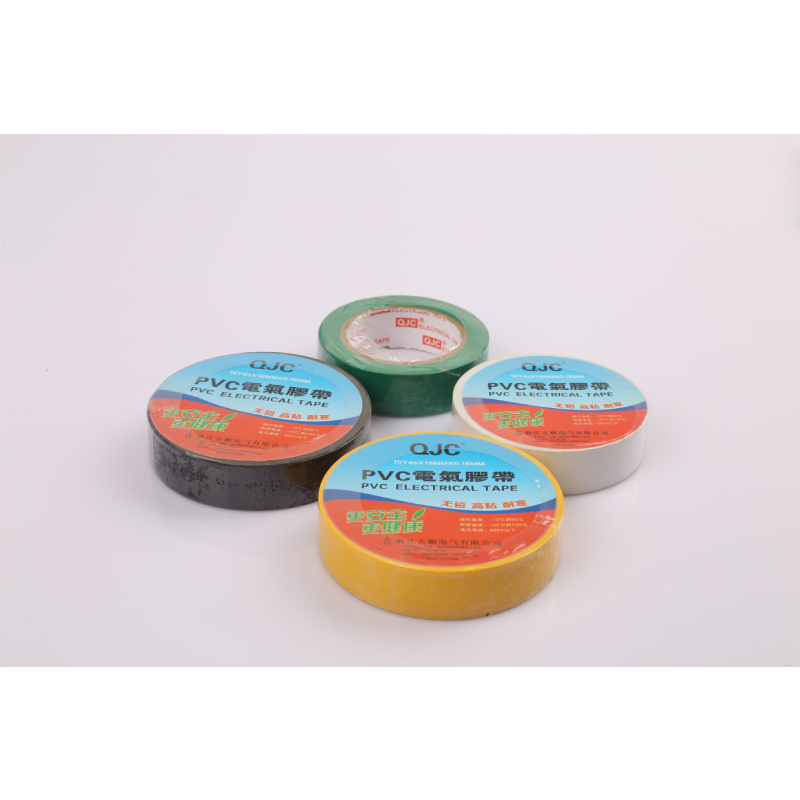
Certifications & Authoritative Endorsements
Authoritativeness in the B2B electrical components sector is built upon a foundation of verifiable certifications, adherence to global standards, and established industry trust. Qiangda Tape is committed to these principles, ensuring that our products, including `rubber tape electrical` varieties like our medium voltage fusion tape, meet the highest benchmarks for quality and safety.
Key Certifications & Standards:
- ISO 9001:2015: Certified for Quality Management Systems, demonstrating our commitment to consistent product quality and customer satisfaction through well-defined processes.
- ISO 14001:2015: Certified for Environmental Management Systems, highlighting our dedication to sustainable manufacturing practices and minimizing environmental impact.
- ASTM Standards Compliance: Our products are regularly tested and proven to comply with relevant ASTM (American Society for Testing and Materials) standards, such as ASTM D4388 for self-amalgamating insulation tape.
- RoHS Compliance: Ensuring that our tapes are free from hazardous substances, adhering to the Restriction of Hazardous Substances Directive.
- UL Recognized Components (Undergoing): We are actively working towards UL recognition for our products, which signifies compliance with specific safety standards for electrical components.
- IEC Standards: Our manufacturing and testing protocols align with relevant International Electrotechnical Commission (IEC) standards, critical for global market acceptance.
Industry Recognition & Partnerships:
With over [Insert Company's Years of Service, e.g., 20+] years of experience in the specialized tape industry, Qiangda Tape has built a reputation for innovation and reliability. We are proud to be trusted partners to numerous leading companies in the utilities, petrochemical, mining, and renewable energy sectors, supplying them with robust insulation solutions. Our long-term client relationships are a testament to our consistent product performance and dedicated customer service.

Conclusion
The ongoing evolution of electrical infrastructure, coupled with increasingly stringent demands for reliability, safety, and longevity, underscores the critical role of advanced insulation materials. Medium voltage fusion tape stands as a premier solution in this landscape, offering a unique combination of electrical insulation, environmental sealing, and mechanical protection that far surpasses conventional options. Its self-amalgamating properties, coupled with superior dielectric strength, weather resistance, and chemical resilience, make it indispensable for diverse applications across the petrochemical, metallurgy, power distribution, and renewable energy sectors.
By providing robust, long-lasting insulation and sealing, products like Qiangda Tape's Medium Voltage Tape contribute significantly to reducing operational downtime, enhancing worker safety, and lowering overall maintenance costs. As industries continue to seek out high-performance, cost-effective solutions for their critical electrical assets, the strategic integration of specialized fusion tapes will remain a cornerstone of reliable and efficient power management.
References
- IEEE Std 100-2000, IEEE Standard Dictionary of Electrical and Electronics Terms.
- ASTM D4388, Standard Specification for Nonmetallic Semi-Conducting and Insulating Rubber Tapes.
- IEC 60811, Electric and optical fibre cables – Test methods for non-metallic materials.
- ANSI C119.1, Electric Connectors and Splicing Systems.
- National Electrical Safety Code (NESC) - ANSI C2.
- ISO 9001:2015, Quality management systems – Requirements.
-
Self Amalgamating Tape: Waterproof Electrical Insulation & SealingNewsAug.30,2025
-
Self Amalgamating Tape: Waterproof Electrical & Pipe SealNewsAug.29,2025
-
Medium Voltage Fusion Tape | Self-Fusing Electrical InsulationNewsAug.28,2025
-
Butyl Rubber Tape for Ventilation PipesNewsAug.22,2025
-
Flex Tape Waterproof for Underground CablesNewsAug.22,2025
-
Flame Retardant Tapes for Circuit InsulationNewsAug.22,2025
